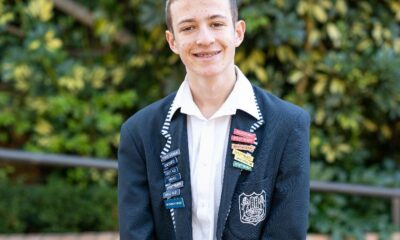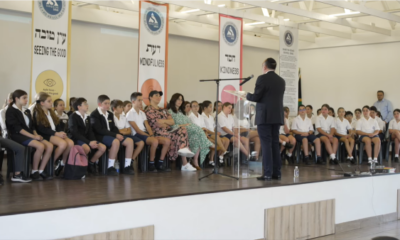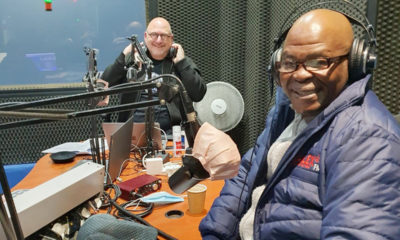
Lifestyle
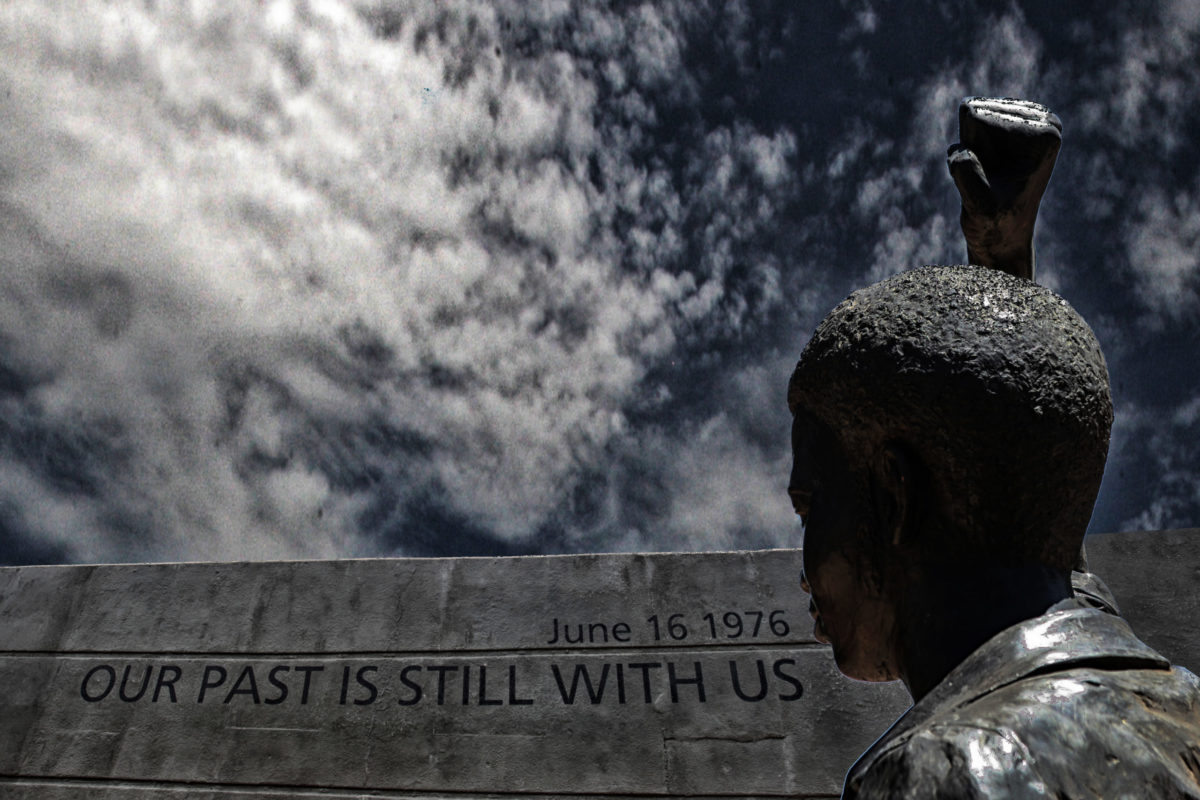
Snapshots of youth
To commemorate Youth Day, the SA Jewish Report asked some of South Africa’s most illustrious photographers to share a photograph that they felt evoked something of youth, either past or present, within our land. They reflected on their choices.
Ilan Godfrey, Swimming in the ‘Long Sea’, Diamanthoogte, Koffiefontein, Free State, 2013
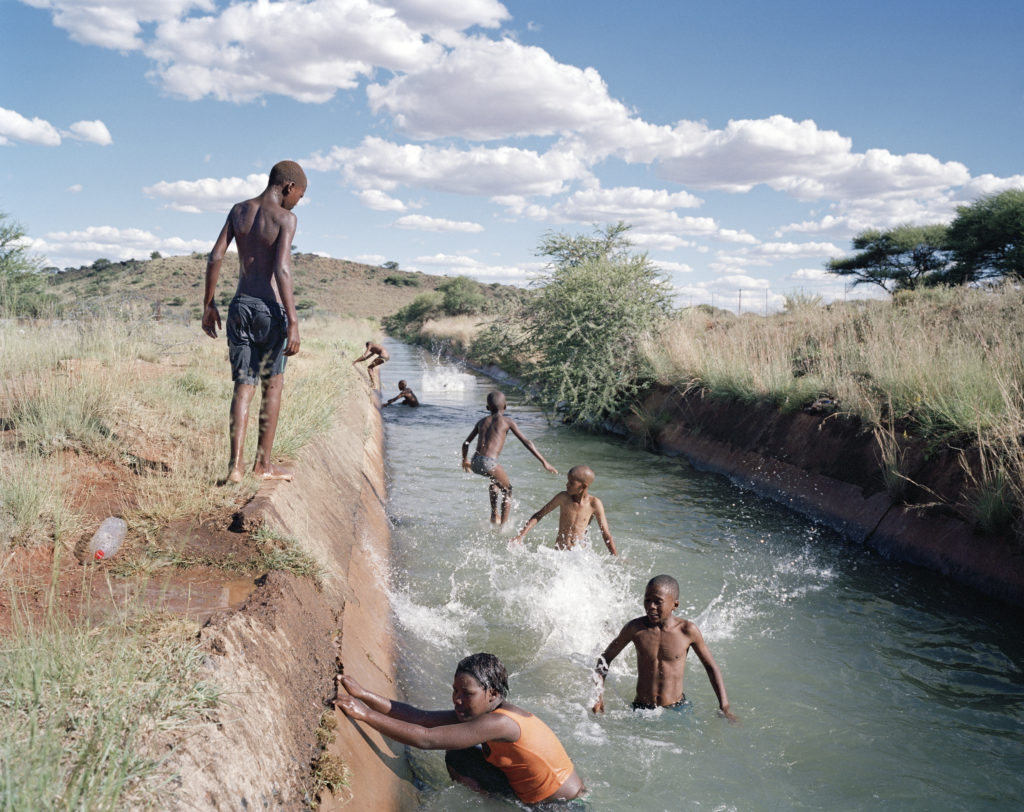
I came across these kids swimming while travelling across South Africa to various mining towns for my book titled Legacy of the Mine. Daily life in and around these mining towns was an important component of this project, and this scene really emphasised how this legacy is engrained on our landscape. The pure joy, spontaneity, and youthfulness of the children, and their ability to find the most imaginative of spaces to play, really epitomises Youth Day for me.
The suburb of Diamanthoogte (Diamond Heights) is home to a predominantly coloured community that lives on the outskirts of the diamond-mining town of Koffiefontein in Free State province. During the summer months, children enjoy swimming in the canals, which they refer to as the ‘Long Sea’. The canals carry the overflow of water through the town from Kalkfontein Dam and the mine dam to outlying farms.
Koffiefontein became a stopover point for transport riders travelling between the diamond fields in the south and gold mines to the north during the 1800s. After diamonds were discovered here, Koffiefontein developed into a mining town. The town has a significant military history. It was seized by the British during the South African (Anglo-Boer) War, and was later used as a detention camp in World War II. Among the internees was John Vorster, who later became prime minister and president of South Africa. The mine has been closed several times over the years, but continues to recover some of the most valuable diamonds in the world.
Jodi Bieber, Soweto Country Club, Soweto, 2007
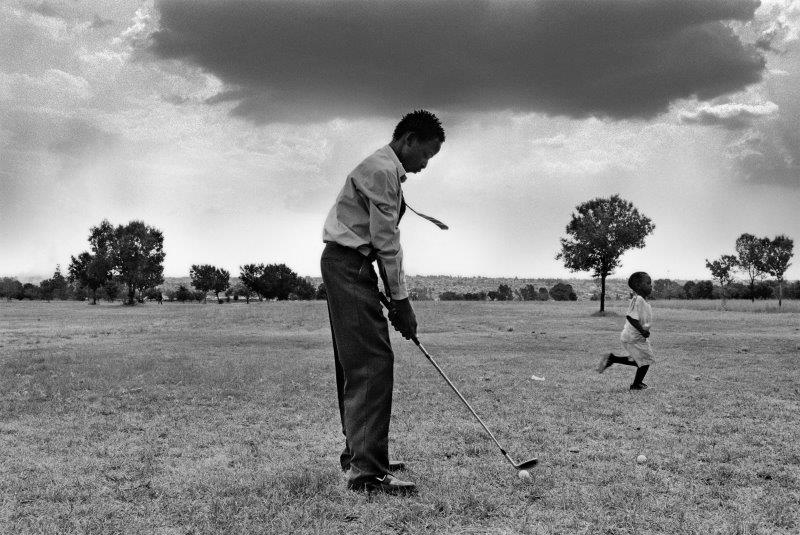
Through all my travels in South Africa and around the globe photographing different communities, my experience reveals that children the world over, often living in environments with few opportunities, show resilience and creativity with very little. I fantasised that one day, I would become a talent scout for those children that shone in order for them to live out their dream.
Marc Shoul, Jané, Sydenham, Port Elizabeth, South Africa, 1999
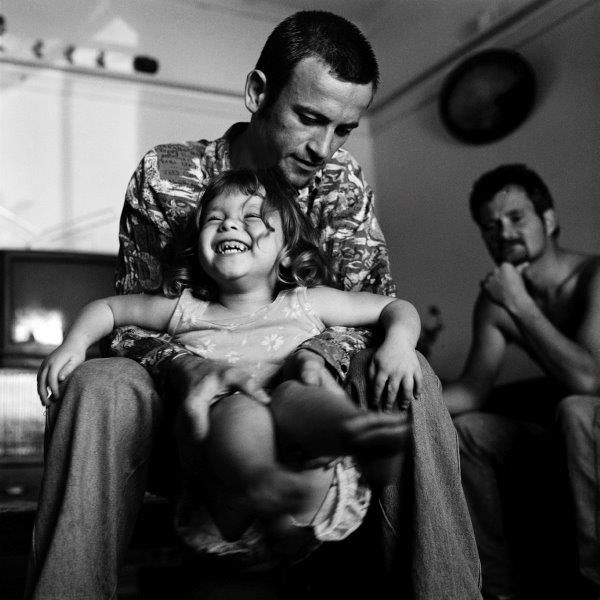
I took this photograph in my early 20s before I became a father. When I Iook at this image, I see the gentleman in the background, and I can sort of relate to the feelings in a way. I shot this in a house that I would frequent from time to time when I was in Port Elizabeth. This was when I was completing a body of work called Beyond Walmer where I was concentrating on the lower-income white group, post-1994. The little girl’s expression is just priceless. The man on the very right hand side, to my knowledge, is her father; the guy holding her is a mother’s new young boyfriend or husband at the time. It would be amazing to go back to that house and see where all these people are now. Perhaps I will.
It’s an image that has contrasts, and hopefully, it has some sort of hope for the future, not only doom and gloom, but the reality is that there is a long, winding road ahead.
Alon Cohen, Kids of the Street, Oaklands, Johannesburg, 2016
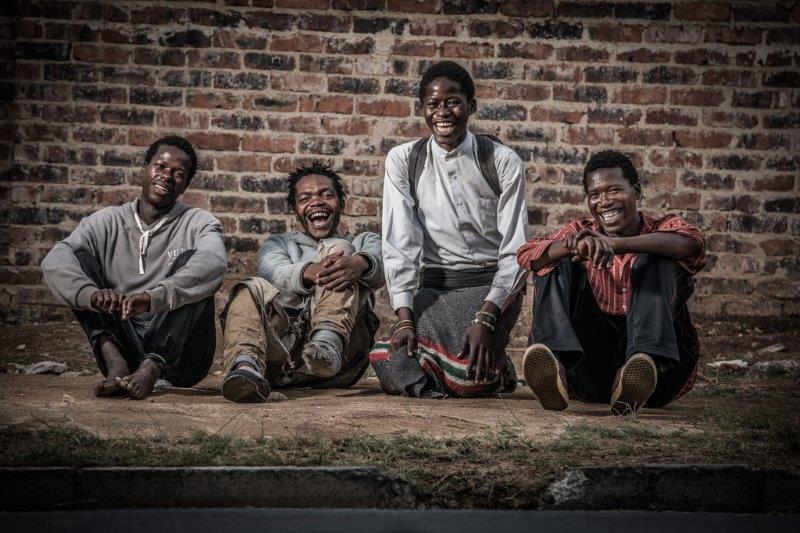
This photograph of four young men that live together in a community on the streets of Oaklands, Johannesburg, represents a massive segment of the youth that we sadly haven’t managed to cater for in this country. These guys are well meaning, lost people that come each from their own unique, dysfunctional background where they felt they could no longer stay because to live amongst their families was more torturous than living on the streets.
I just know that given a healthy place to live and a basic purpose to fulfil every day, many of these youth could bring value to their lives as well as the country as a collective. Yet, in spite of everything, they’re still able to look at each other and have a laugh. So human, just like any one of us.
Paul Weinberg, Dancers, 1995
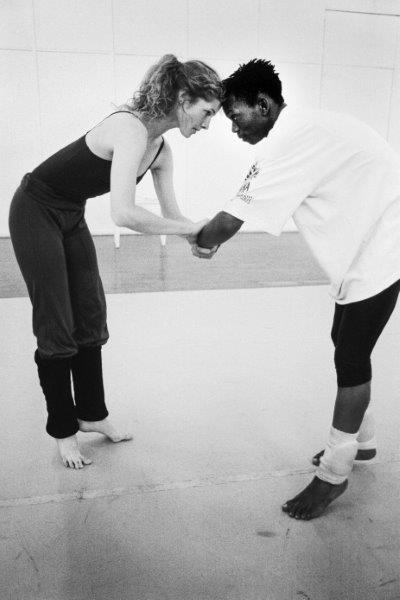
I took this photograph of two Zimbabwean dancers while on an assignment for a cultural magazine called Du in 1995. It was a dance production with a group of street performers. A fleeting moment of connection between two people, whose parents had been engaged in a conflictual past, but now were kinetically and intimately bonded through this performance. Images provoke arresting questions. That was 25 years ago. The two youths then are now middle aged. So much has happened in Zimbabwe since this period, as in this country. What happened to these two people, where are they now, how did life play out for them? This image also provokes an important meditation for me. A moment of synthesis that speaks back as well as to the future. How difficult is it really to suspend prejudice and polarity to find our common humanity and human potential? Why do we struggle to learn this over generations? This image, buried deep in my archive, has come back to life. It’s a touchstone for a more humane and loving world, as relevant now as it was then.
Eric Miller, Poverty, the Third Pandemic, Ingwavuma district, KwaZulu-Natal, 2002
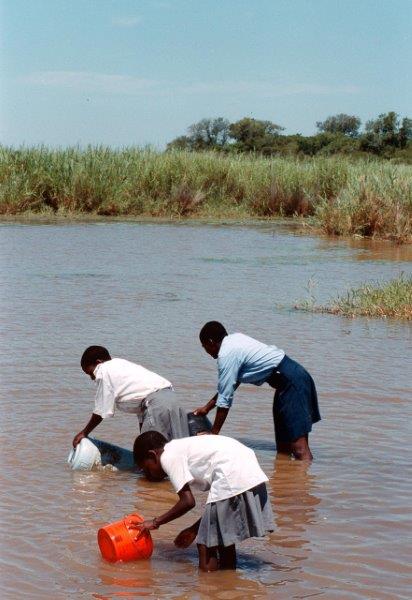
In the middle of this pandemic, the consequences on the poorest and most vulnerable are exacerbated by the poverty and circumstances within their communities. My work as a documentary photographer in this country stretches back several decades, and includes the documentation of a previous pandemic, HIV/Aids. Ingwavuma district, KwaZulu-Natal, was at the epicentre of the HIV/Aids pandemic, with an infection rate generally greater than 30%. The photograph shows the three oldest of five sisters orphaned after their parents died of Aids-related illness. Four of the girls attended school, the fifth taking care of her own two-month-old baby at home. The girls, aged then between eight and 19, were left to care for themselves, collecting water from a nearby stream for cooking, washing, and so on. They were reliant on assistance, receiving food provided by a local community organisation which survived on donations from well-wishers. During the current pandemic, my thoughts often turn to them and the many similarly orphaned children left to fend for themselves or in the care of elderly grandparents who during this pandemic have been most vulnerable in the face of rampant COVID-19 infection, often relying on government grants as their only income for survival.
Ilan Ossendryver, Tyre Race – Kliptown, Soweto, 2019
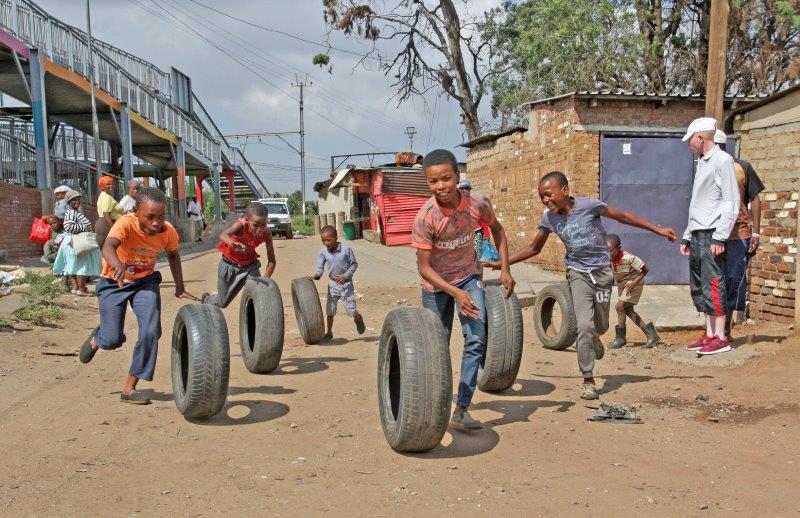
Kliptown is an area in which everyone has been forgotten, yet it’s quite an amazing place. I’ve been working with the community there for many years.
I selected the photograph because of the creativity with which children create toys and games. They have parents that care, their parents will fight for everything, but the government doesn’t care. The photograph shows the creativity of the children, but also the failure of government to really help people. They live in really terrible conditions: no running water, no toilets, and no electricity.
I do outreach programmes and we hold a tyre race where they get prizes. Eventually, I give everyone prizes, but first I want them to learn to keep trying better next time. In their expressions, you can see the absolute determination to win, and the community watching them. One of the men watching is actually one of the best drummers in South Africa, and even played at a Lag B’Omer celebration at a shul in Johannesburg.





